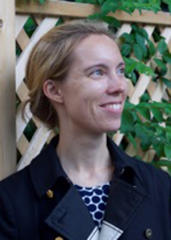A balancing act: Making established courses your own
This post is republished from Into Practice, a biweekly communication of Harvard’s Office of the Vice Provost for Advances in Learning
 Karin Öberg, Thomas D. Cabot Associate Professor of Astronomy, taught departmental introductory course Stellar and Planetary Astronomy in 2016 by building on established material and modifying the curriculum using student feedback and her own observational assessment.
Karin Öberg, Thomas D. Cabot Associate Professor of Astronomy, taught departmental introductory course Stellar and Planetary Astronomy in 2016 by building on established material and modifying the curriculum using student feedback and her own observational assessment.
The benefits: Öberg saved pre-semester preparation time by using the same in-class worksheets of earlier iterations and retaining the course’s primary elements—three lab sessions; weekly blog post assignments; and an active, collaborative learning in-class format supervised and assisted by roaming instructors.
The challenges: It can be difficult, Öberg found, to strike a balance making sufficient use of another instructor’s previous work and incorporating her own personality and pedagogical aims. “I like giving students a bit more direction, and I increased the amount of traditional lecture time at the beginning of each class to ensure that students were comfortable with essential concepts before applying them in small groups.”
Takeaways and best practices
- Solicit feedback prior to the semester. Öberg spoke informally with students who had taken the class previously, and made changes to address their comments and concerns. She incorporated additional lecture sessions to eliminate some of the confusion caused by tackling problem sets too early in the semester, and hired an undergraduate concentrator (who had already taken the course) as an “in-class only” teaching fellow to provide more prompt in-class assistance. “This worked extremely well. It removed one more barrier for students and alleviated some of the stress on the teaching staff.”
- Evaluate success along the way. “I was lucky that the existing structure of the course was aligned with where I was going anyway,” Öberg expressed. Nonetheless, she was mindful of how the pedagogy played out in practice, modified where possible, and noted more substantive changes to try when she teaches the course again in 2018 (i.e., reducing the weekly blog posts in order to emphasize quality, and providing more formal instruction on scientific writing).
- Trust your instincts to find balance. Öberg felt herself becoming preoccupied with maintaining undergraduate interest throughout the semester (a reversal from teaching graduate students who have already elected the field of study), and tried regularly introducing new, exciting research in lecture to increase engagement. Ultimately, she became comfortable accepting that not all critical concepts lend themselves to “fun” lectures. She finds it challenging, especially as a junior faculty member, to be both an approachable instructor of whom students feel comfortable asking questions, and an authority figure, but also experiences that this balance becomes easier to find with each course she is teaching.
Bottom line: Öberg recalls being anxious about sticking as close as possible to the existing, successful course structure, but in future opportunities aims to trust her intuition earlier: “Trying to teach like someone else is never going to work. You will only be a bad copy of them.”

